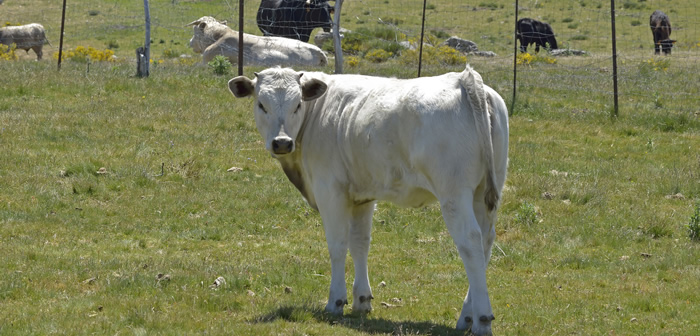This season’s reduced grazing quality has taken its toll on heifer growth rates meaning that regular weighing and appropriate supplementation will be a must this autumn to keep heifers on track.
Recent heifer weight data from one of AHDB Dairy’s Calf to Calving (C2C) host farms in Dorset, found a sample of 11-13 month old, grazed heifers were about 50kg behind a target of 330kg.
In order to calve in at the most economic age of 24 months and hit 90% of mature weight at calving, they now need to gain 860g/day, which can only be achieved through supplementation. If this growth is not addressed, heifers may calve in later at a cost of £2.87 a head for every day over 24 months.
The drop in growth seen at Peter Hunt’s farm in Sherborne, mirrors that seen on a sample of seven farms involved in the C2C initiative. As part of the C2C initiative, the growth, health and nutrition of 10 heifers on each of 13 farms are being monitored every three months. Farmer meetings are also being run on the host farms with the aim of bringing the latest research and best practice to farmers, improving calf survival and increasing the number of heifers making it into first lactation.
Overall, 54% of heifers weighed on seven farms have been found to be below target weight following the last weighing. AHDB Dairy’s Technical Manager, Andy Dodd said this correlated with grazing quality.
“The heifers that have reduced growth rates are general the ones that have been grazing. That’s largely due to the fact grass ME is down by about half a point which obviously impacts on growth,” he explained.
Mid-summer fresh grass has generally analysed at around 11.5ME, versus a usual 12-12.5ME. Although ME is now picking up, declining grass dry matter may further add to heifer rationing challenges.
Andy said this highlights the need to weigh heifers to see if any lighter animals need to be split out and supplemented with quality silage or about 1.5-2kg of concentrate a head. Farmers can also take fresh grass samples or use the AHDB Dairy “Forage for Knowledge” website to look at grass quality on farms in their area to asses if there is a quality shortfall.
He also advised farmers to avoid “guessing” heifer weights and instead use weigh bars or a weigh band. This was highlighted at the recent C2C event at Blackmarsh Farm, where attending farmers were asked to guess the weight of the 10, 11-13 month old heifers. On average, the group over estimated by around 50kg.
Andy said monitoring helps determine if heifers are going to hit key milestones. “For example, for heifers to reach puberty they need to be 50% of their mature weight. This target needs to be reached around 12 months of age to allow them to have several cycles before being served to maximise first service conception rates,” he explained.


